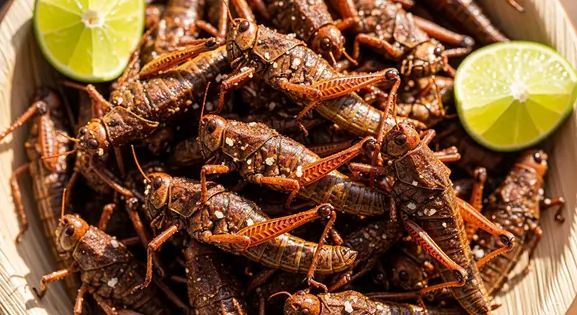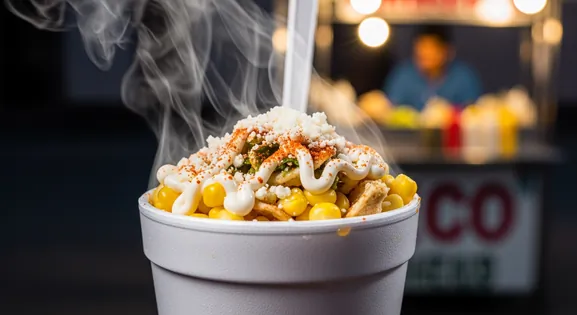Aguachile in Mexico City
Aguachile

A Guide to the Local Experience
While aguachile hails from Mexico's coasts, Mexico City has embraced this zesty seafood dish, making it a must-try for any food traveler. Experience the capital's unique take, from bustling markets to upscale eateries, offering a refreshing taste of the Pacific in the heart of the country.
New to Aguachile? Learn all about its history in our complete guide.
What the Locals Know
Many top marisquerías receive fresh seafood deliveries on these days, ensuring the freshest aguachile.
This less-touristy neighborhood is known for its excellent, more affordable marisquerías where locals go for authentic seafood.
Aguachile is a popular Sunday hangover remedy. Join locals for a lively brunch experience at a marisquería.
Quality Checklist: How to Find the Best
What to Look For
-
Established 'marisquerías' (seafood restaurants) in reputable areas like Roma, Condesa, Polanco
These areas often have restaurants with higher standards and reliable seafood suppliers, crucial for raw dishes inland.
-
Visible refrigeration and displays of fresh (not frozen) shrimp/fish
Ensure the restaurant demonstrates proper cold chain management. Seafood should look plump and smell oceanic.
-
Dish prepared immediately upon ordering
Aguachile should be mixed just before serving, not pre-marinated for hours like ceviche.
What to avoid
-
Street stalls selling aguachile, especially in hot weather
Lack of refrigeration and potential hygiene issues make street-vended raw seafood extremely risky in CDMX.
-
Restaurants with a strong 'fishy' smell upon entering
Indicates poor handling or old seafood. Fresh seafood environments smell clean or mildly of the sea.
-
Aguachile where the shrimp looks opaque white or mushy
Suggests the shrimp isn't fresh or has been 'cooking' in lime juice for too long, affecting texture and potentially masking spoilage.
A Traveler's Guide to Ordering Aguachile
When ordering aguachile in Mexico City, specify your preferred spice level; 'verde' (green) is common, but 'rojo' (red) with chiltepín is for the brave. Ask if they have 'aguachile negro' for a darker, often spicier version. Don't hesitate to ask for extra tostadas or totopos. Locals often add a dash of Maggi sauce or a specific hot sauce like Salsa Huichol to customize their dish, so look for these on the table.
Where to Find Aguachile in Mexico City
Colonia Roma & Condesa
Trendy areas with high concentration of quality seafood restaurants, both traditional and innovative, perfect for a modern aguachile experience.
Contramar, El Pescadito, Mercado Roma
Lunch (1 PM - 3 PM), Weekend afternoons
Mercado de San Juan
A renowned market famous for its specialty seafood vendors, offering exceptional quality and unique ingredients for aguachile.
Pugibet section (seafood area)
Morning (10 AM - 12 PM), Early afternoon
Colonia Del Valle
A vibrant neighborhood home to several traditional marisquerías, popular with a loyal local clientele seeking authentic seafood dishes.
Mariscos El Paisa, Fisher's
Lunch (1 PM - 3 PM)
Polanco
An upscale district boasting innovative seafood restaurants that offer creative and refined aguachile versions, perfect for a gourmet experience.
Palmares, La Docena
Lunch, Dinner
Vendor Tips
- Ask for 'aguachile del día' (aguachile of the day) for the freshest preparation.
- Many Mexico City vendors receive seafood deliveries Tuesday through Friday mornings, making these days optimal for freshness.
- Restaurants offering overly extensive menus beyond seafood specialties may not focus on seafood freshness and quality.
- Look for restaurants that specify their seafood's coastal origin (e.g., 'camarones de Sinaloa' or 'pescado de Nayarit').
Know Before You Go
Dietary Information
Important Note for Travelers: Your safety is our priority. Below are the common allergens associated with the traditional preparation of this dish. However, recipes and ingredients can vary significantly between establishments. Always confirm all ingredients directly with the food vendor before ordering, especially if you have a severe allergy.
Potential Allergens
Dietary Suitability
Price Guide
Budget Tips
- Lunch specials ('comida corrida') at marisquerías in neighborhoods like La Condesa often include aguachile at better rates (180-250 MXN).
- Market stalls in Mercado de San Juan or Mercado de Coyoacán typically offer lower prices than restaurants.
- Order during 'hora feliz' (happy hour) specials at seafood restaurants, especially weekdays.
- Seafood restaurants in Colonia Escandón or Doctores typically offer better value than those in Roma or Polanco.
Serving & Seasonality
In Mexico City, often served with additional garnishes like avocado, mango, or chicharrón. Many upscale restaurants use decorative plating with modern presentations, while traditional marisquerías serve in simple molcajetes or shallow clay dishes with ample tostadas.Best Times to Enjoy
- Lunch: Optimal time after morning seafood deliveries arrive (12 PM - 3 PM).
- Weekend Brunch: Popular as part of weekend gatherings (11 AM - 2 PM).
Seasonal Availability
Available year-round, with consistent quality due to regular deliveries from the coast.
Traditions and Etiquette
Local Significance
In Mexico City, aguachile represents coastal flavors brought inland and has become a staple of weekend social dining. It's particularly popular among younger diners and foodies exploring Mexico's diverse culinary landscape.
Eating Customs
- In Mexico City, it's common to add a few drops of Maggi sauce or Salsa Huichol for extra flavor.
- Often eaten alongside other seafood appetizers like tostadas de atún or pulpo.
- Locals know to squeeze extra lime and add salt to customize to their preference.
Twists on a Classic
Aguachile Capitalino
Mexico City's adaptation often features additional ingredients like avocado and mango, sometimes with a touch of habanero for extra heat.
Fusion Aguachile
Creative interpretations in upscale restaurants might incorporate Japanese influences (yuzu, soy sauce) or unexpected ingredients like grasshopper salt (sal de chapulín).
Vegetarian Innovations
Mexico City leads in plant-based adaptations, with mushroom or hearts of palm versions available in progressive restaurants.
Contramar Style
Following the famous restaurant's interpretation, this style features perfectly butterflied shrimp and a balanced, less aggressively spicy sauce.
Getting the Most Out of Your Meal
Finding Reliable Aguachile in Mexico City
Learn how to identify and choose trustworthy vendors for the freshest and safest aguachile experience in Mexico City.
- Research reputable 'marisquerías' online (Google Maps, local food blogs) focusing on recent reviews mentioning freshness.
- Visit established seafood markets like Mercado de San Juan (Pugibet section) – some restaurants nearby source directly.
- Ask about seafood sourcing: Good places might mention daily deliveries from coastal areas (e.g., Sinaloa, Baja).
- Choose busier restaurants, indicating higher turnover of perishable ingredients.
- Prioritize places with clean, modern appearances and visible refrigeration.
Ordering Aguachile Safely and Smartly
Master the art of ordering aguachile in Mexico City, ensuring both a delicious and safe culinary experience.
- Confirm the seafood (usually 'camarón' - shrimp) is raw and prepared 'al momento' (at the moment).
- Specify your desired spice level ('nivel de picante'): typically verde (serrano/jalapeño) or rojo (chiltepín). Ask '¿Cuál es menos picante?' if needed.
- Observe the freshness cues: shrimp should be plump, translucent; lime juice bright; cucumber/onion crisp.
- Eat promptly after serving; don't let it sit in the heat.
- If anything smells or tastes off, stop eating immediately.
Our Commitment to Quality
At Tasteplorers, our mission is to provide the most accurate and useful travel information in the world. To achieve this, all content on this site is created through our unique editorial framework. We utilize leading AI research tools, guided by our proprietary prompts, and a multi-stage validation process. This entire system is overseen by our editorial team to ensure everything we publish meets our high standards for accuracy, cultural nuance, and practical value for travelers.
Learn more about our Editorial Process and our Mission.
Explore regions
Europe
Discover Europe's diverse culinary landscape, from Mediterranean flavors to hearty Alpine fare. Learn to navigate markets, decode menus, and eat like a local.
Latin America & Caribbean
Discover the vibrant cuisines of Latin America & the Caribbean. Our expert guide covers everything from Mexican street food to Peruvian ceviche and market tips.
Oceania
Explore Oceania's diverse food scene. Learn about Polynesian earth ovens, Fijian feasts, and the vibrant café culture of Australia and New Zealand.
Southeast Asia
Explore Southeast Asia's diverse food cultures from Thailand to Vietnam. Get expert tips on navigating spice levels, choosing quality vendors, and understanding the rich traditions of the region.




